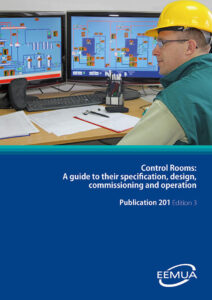Control Room Design - Aligned with EEMUA 201
The role of the Control Room Operator in managing risks of modern process plant is indisputable. Detecting deviations early, diagnosing the causes reliably and responding promptly and appropriately all contribute to the avoidance of major accidents and reduces reliance on automated systems. To do this, Control Room Operators need to maintain good situational awareness. Their ability to perform this critical role will depend on them being healthy and alert.
Description
Control room design can have a big influence on the ability of the Control Room Operators to perform their role effectively. In particular:
- A good quality HMI can ensure they have the data they need in a useful format;
- The working environment can affect health and alertness;
- Physical design and provision of equipment can support effective communication.
Control room design is a one day course that will introduce the up to date guidance on control room design. It is aimed at people engaged in reviewing existing control rooms or designing new or modified control rooms.

The tuition is aligned with the 3rd Edition of EEMUA 201 published in 2019, a leading guide to good practice for all aspects of control room design issued by the EEMUA (Engineering Equipment and Materials Users Association). Wilde was instrumental in developing this latest edition of the guidance along with active involvement of the EEMUA membership, experienced control room operators, ergonomists, designers and the HSE.
Participants can purchase a copy of the book recommended by the HSE – ‘Control Rooms: A guide to their specification, design, commissioning and operation’ Publication EEMUA 201 (Edition 3)’ from the EEMUA shop here >>
Who Should Attend?
Managers, designers, supervisors and operators.
Duration
1 Day
The course commences at 9:00am and finishes at approximately 5:00pm.
Agenda
Sessions
Introduction
- How does control room design influence process safety risk?
- Human factors;
- The deign process;
- Management of change;
- Justifying control room upgrades.
Control building design
- Location vs risk;
- Building features
- Control room size;
- Control room working environment.
Console design
- Furniture and equipment selection;
- Console desk size;
- Chairs;
- Console arrangements;
Human Machine Interfaces (HMI)
- HMI features;
- Design process;
- Use of colour, symbols and objects;
- Types of display;
- Navigation;
- Alarm management (reference EEMUA 191).
Related issues and emerging topics
- Accessing control systems from outside of the control room;
- Training and competence;
- Maintenance;
Wrap up
- Developing a human factors integration plan;
- Evaluating design (including existing control rooms);
- Final questions.